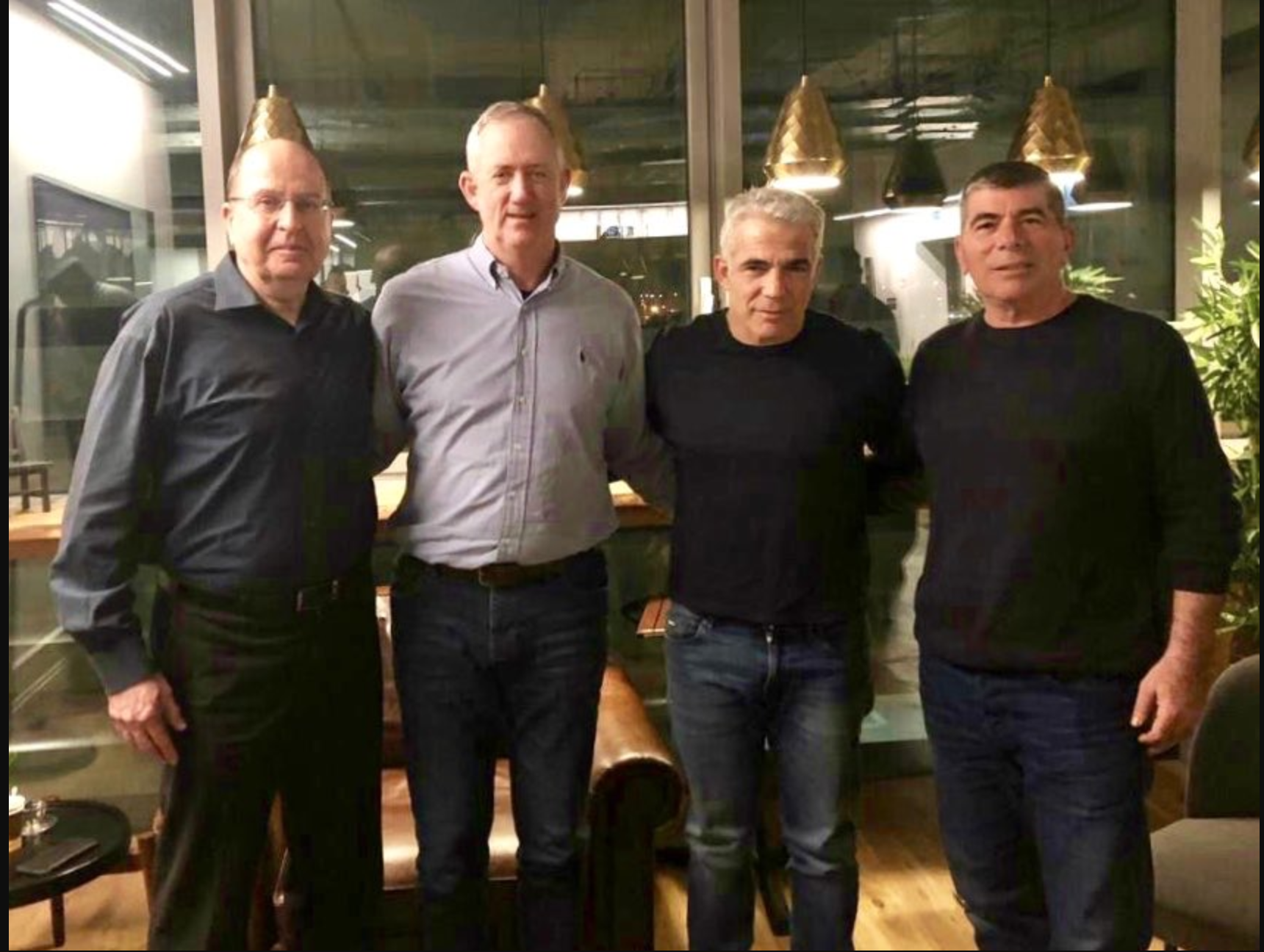Centrism is finally returning to Israeli politics, but there are still plenty of reasons to be concerned
The new Blue and White Party may appear to be more progressive, ‘but do not expect change in terms of identity issues and the Israeli-Palestinian conflict’ an Israeli public opinion expert warned


The negotiations, fraught and tense, went on through the night. And so it wasn’t until 5.30am Thursday morning that the news emerged. Israel’s paratrooper former army chief and the slick leader of one of the country’s main centrist parties had agreed to a merger in the upcoming polls.
Benny Gantz, ex-chief of staff who is seen to be less hawkish and right-wing than the incumbent Netanyahu, and Yair Lapid, a former journalist turned head of Yesh Atid party, had merged into the “Blue and White” Party.
In a first for Israel they agreed that if they won and were able to build a coalition, they would share the premiership of the four-year term.
“Israel lost its way. This is a divide-and-conquer government that tears people apart.” Lt Gen Gantz said on Thursday night in an emotional speech standing by Lapid.
He added that they had “set our egos aside in favour of a shared agenda. Neither of us is above the people nor above the state.”
People duly went wild.
“Political bombshell”, “game changer”, “earthquake”, “the big bang” were the terms used in the Israeli press. On social media Israelis, tired of the current administration – one of Israel’s most right-wing governments – talked about it as a “momentous moment for change”. Others heralded the men for “putting their egos to one side”.
The polls also responded. The new party is expected to win 36 seats in the 120-seat Knesset, according to polls by Israel’s Channel 12 and 13 news. The two networks predicted Netanyahu’s Likud party would secure just 30 and 26 respectively.
There were discussions of Israel finally embracing a centrist agenda. The word progressive was even bandied about.
It is true that Netanyahu, his party and his people were quick to scaremonger the largely right-wing Israeli electorate, criticising Gantz-Lapid for being “left wing” and “pro-Arab”.
But how much of this is actually the case?
While it is unlikely the pair will peddle the same fervent nationalist and populist line that Bibi has sculpted into his own brand, don’t expect a major break from the norm.
Lt Gen Gantz’s first campaign video was a disturbing rolling body count of the Palestinians killed by his soldiers during the 2014 war on Gaza that he oversaw. The advert, layered over footage of funerals and destroyed civilian neighbourhoods, concluded by saying that Gantz was responsible for killing 1,364 Gaza militants in the seven-week military campaign. The problem is that this militant body count is even higher than Israel’s agreed numbers and nearly double the United Nations’ figures.
The video effectively glorifies the killing of civilians.
The next clue is in the candidates that the Blue and White Party have put forward.
Dahlia Scheindlin, a public opinion expert who has worked on five Israeli electoral campaigns, nicknames it the “testosterone list”. For a start, there are only two women named among the top 10 people.
Also within the 52-person list are three former army chiefs and at least three of Netanyahu’s former top guys.
The Bibi trio include former defence minister Moshe Ya’alon, Zvi Hauser, his former cabinet secretary and arguably the most right-wing candidate on the Blue White list, and Netanyahu’s former communications person Yoaz Hendel.
Hendel, known for his hawkishness, said in a recent interview with the Jerusalem Post there was no difference between his former boss Netanyahu and Gantz and Ya’alon, for whom he now works.
“I would be cautious about using the term progressive,” Scheindlin warns.
“They may be more progressive in terms of limiting the role of religion in public life and, say, LGBT+ rights, but do not expect change in terms of identity issues and the Israeli-Palestinian conflict, which are two sides of the same coin.”
The other issue the Blue and White Party faces is trying to build a coalition. While their new party might outdo Netanyahu’s at the elections in terms of numbers of MKs, in order to lead the government they have to build a coalition whose combined seats stretches past 60.
Israel’s broken left, confused centre and the Arab parties are simply not big enough to plug that gap.
Even if Netanyahu’s Likud Party scrapes by with 30 seats, he still has the opportunity to rally the parties of the right and build a government.
And that is why the rhetoric from Gantz-Lapid camp will have to shift right, to win over the voters beforehand.
That said, it’s still early days and the Gantz-Lapid union has for the first time properly challenged Netanyahu in both his main credentials: statesmanship and security.
Scheindlin said they might strike the right balance and overcome the fundamental contradiction within the Israeli vote: while many will agree with the progressive socio-economic policies of the centre and Left, when it comes to nationalism and military matters they vote right.
“The Blue and White Party is trying to leverage that contradiction in the Israeli vote by bringing the progressive policies via Lapid’s party and blending it with the tough militarism led by Gantz,” Scheindlin said.
“And they are hoping that it works.”


Join our commenting forum
Join thought-provoking conversations, follow other Independent readers and see their replies